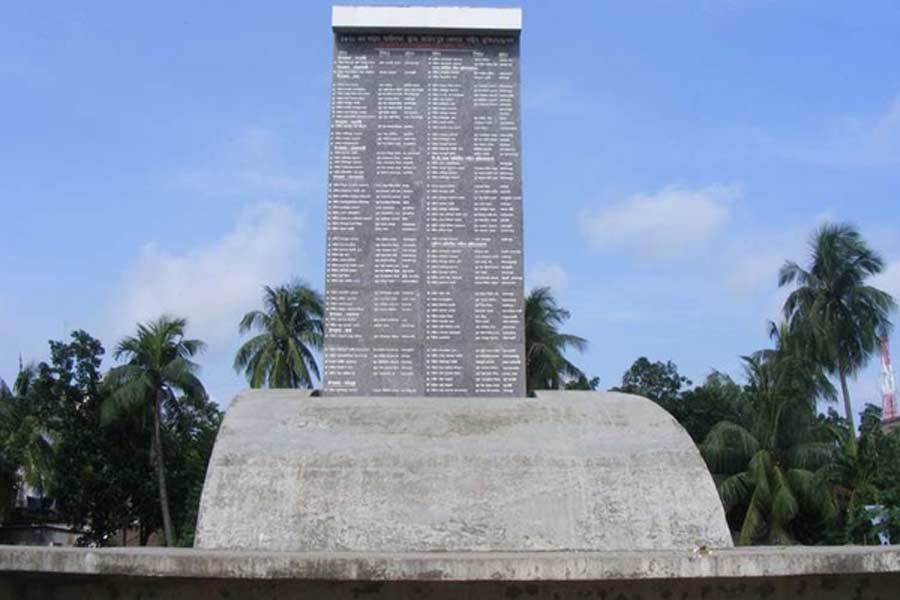On the day of the independence of Pakistan on 14th August, 1947, East Bengal, its eastern wing, saw no spontaneous jubilation. To the average people in Dhaka, the day was business-as-usual. But they were supposed to be swept away by the outpourings of emotion. It was because they had resoundingly backed the creation of Pakistan through voting in various elections. They felt shortchanged; thus elation in capital Dhaka was subdued with isolated events of sweetmeat distribution among passersby. The then state of Pakistan came into being through a lengthy andcircuitous political process. Its independence, along with India's, from the British rule was a foregone conclusion.The only formality remaining to be completed was the fixing of the date and time of the announcement of independence of the two states.
Twenty-four years later, the day of independence on 26th March, 1971, in East Bengal-turned-East Pakistan, and declared Bangladesh, witnessed a blood-soakedDhaka. The previous night the Pakistani soldiers let loose a bout of carnage on the Bengalees demanding freedom from the clutches of Pakistan. After a 9-month-long Liberation War, the Bengalees tasted freedom, the freedom from all types of discrimination. In practice, the day of victory, December 16, 1971, when the heroic Freedom Fighters entered Dhaka waving the flag of free Bangladesh, saw the real celebration of independence in Bangladesh.
Unlike 14th August, the 16th day of December in 1971 blended euphoria of the masses with the wails of the mothers and fathers. Their sons and close relatives embraced martyrdom while fighting with the Pakistani occupation forces. Mainly due to this, immediately after the creation of independent Bangladesh, people became used to witnessing countless memorials being built all over the country. Those were in memory of the martyred Freedom Fighters. Many newly created states do not have to pass through this traumatic ordeal of creating memorials for their fallen heroes.
As part of a national ritual, the days of 26th March and 16th December are celebrated every year amid great festivities in the country. Viewed formally, the days are the Independence Day and the Victory Day. Since both the days stood witness to ruthless Bengalee killings and martyrdom during the 9-month occupation of Bangladesh, tinges of mourning also overlaps the occasions. A significant part of the two days' observance is laying floral wreaths at the foot of the memorials built to keep the Liberation War memories alive. With the days' observance over, the rest of the year wears on in its routine manner.
In the first few years of the Bangladesh independence, the nation witnessed a spree of erecting Independence memorials. Most of them were hastily built, and, thus, smacked of amateurism. With improvised structures built throughout the country, the nation had to wait for a JatiyaSmritiShoudha (National Martyrs' Memorial) for 11 years. After its construction for a few years, it was inaugurated at Savar in Dhaka in 1982. Following its opening, the erection of architecturally designed memorials in every corner of the country became the norm. Nationally important institutions like universities, colleges and famed schools joined a virtual competition in building their own uniquely built structures. Many boasted of their extraordinary memorials. Few sectors were willing to put up with the absence of memorials in their areas. A number of government and private offices, business houses and associations also came up with amazingly magnificent memorial structures. With the dilapidation of a few of them, newer structures in conformity with the contemporary architectural designs replaced them.
The trend of setting up memorials, however, didn't go smoothly. To the utter disgust and horror of the general people, a trend of opposing the building of memorials crept into the country. It began in the late 1970s. To the simple patriotic youths, many of them Liberation War vets, the murky development emerged as a great blow to the nation`s future. The damages done by the 'wartime collaborators' to the memorials compelled the former Freedom Fighters to get united. Thus during the period of relative peace in a war-ravaged country, a confrontational situation ensued. People in general sensed in the distressing incidents the portents of anti-Bangladesh machinations.
As the patriotic Bengalees recalled how a small segment of people during the Liberation War was engaged in activities aimed at sabotaging the War, they reached the unanimous conclusion: anti-Bangladesh rogues were lurking in different layers of society. After remaining hidden for some years, they began trying to come out in the open. The enlightened citizens, the intelligentsia in particular, didn't sit idle. They reacted by saying desecrating and causing damages to war memorials were just the prelude to greater plan to destabilise the nation, and block the newly emerged nation's progress. Bangladesh was finally able to overcome the hurdle.
These grim developments do not seem to have ever been visualised by even the doomsters. The thoughtful segments of the people observed on several occasions that the elements against the emergence of a socio-economically strong and modern Bangladesh had been equipped with a long-term planning. It is based on how to make the nation deviate from its basic character. And, of course, weaken its progressive footing in the global perspective in the distant future.
Coming to the memorials for Freedom Fighters and those built to distinguish the sites of mass killings, the failures are countless. Lots of Freedom Fighters have gone missing, perhaps, forever. The hopes for locating the mortal remains and mementos of them after 49 years have become illusory. Moreover, hundreds of 'killing fields' in remote villages have been obliterated in the passage of time. The nation can atone for its lapses by erecting mausoleums or memorials for the untraced heroes and obscure village folks. 'Memorial for Unknown Soldiers' is a common spectacle in many countries today.


